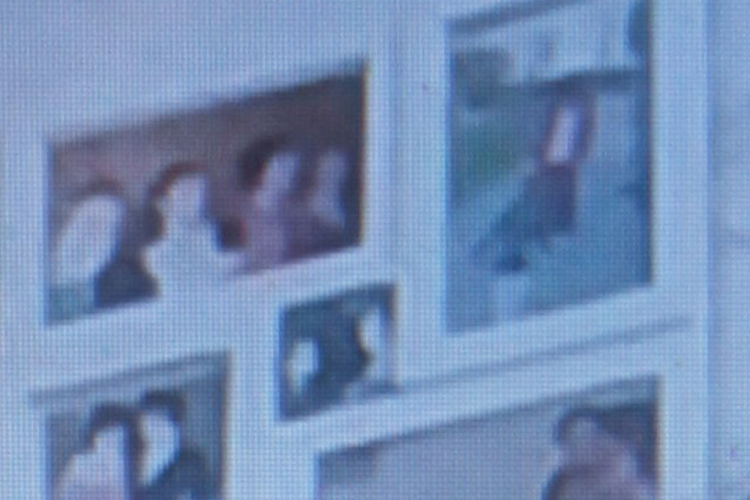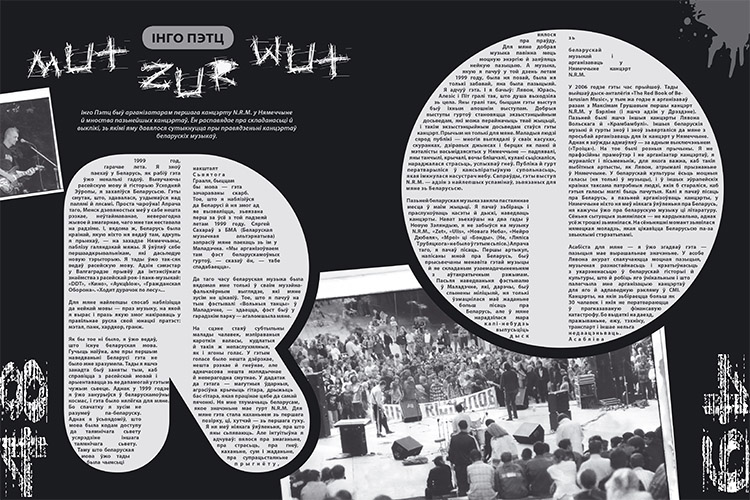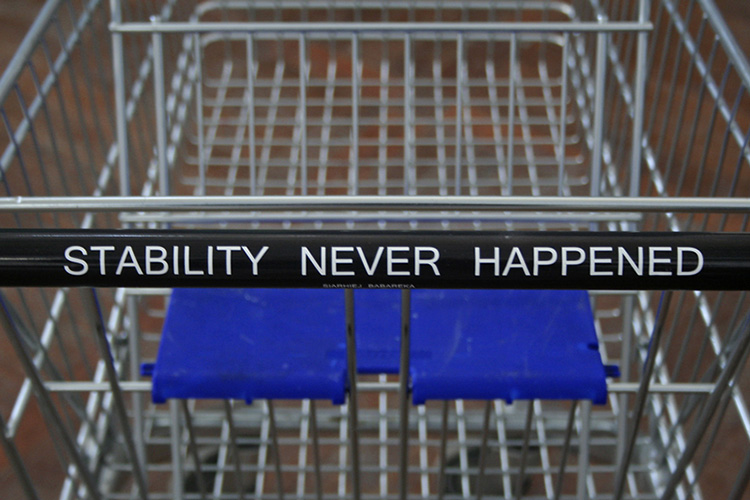
Аўтар: pARTisan, 22/11/2014 | ART Cult Aktivist XXY
EXPOSITION OF THE «XXY» ART PROJECT
Contemporary Art Gallery Y, multimedia magazine 34mag.net, media project «pARTisan»
September 13th — October 2nd 2014
Art Project «XXY»
#Identity is formed through relations between subjects and community and is determined through the horizon of an imaginary structure, with which an individual associates her/himself — a #gender, a nation, a social class etc.
In order to be a part of a particular social group, an #individual has to accept or reject the rules and practices of appearance, which are associated with particular identities. We can critique these predetermined images and models, however, we can’t ignore them. Because our clothing, #sexuality and behaviour are the markers, on the basis of which we are determined as fitting or not fitting into a group, or determined as threatening (which can inflict #aggression and provoke #violence) or as immediately trustworthy. The individual therefore gets caught in a kind of a normative box, only through which he is understood and accepted by the society or a particular community.
Nevertheless, these days more young people refuse to define their specific ‘labels’. They understand their identity as dynamic, discontinuous, non-binary and call themselves #queer (American colloquial for #others, weird or marginal groups). This is how the queer move towards opposing the society that wishes to frame (to ‘normalise’) them, understand them in specific terms and through this ‘boxing’ form an attitude towards them.
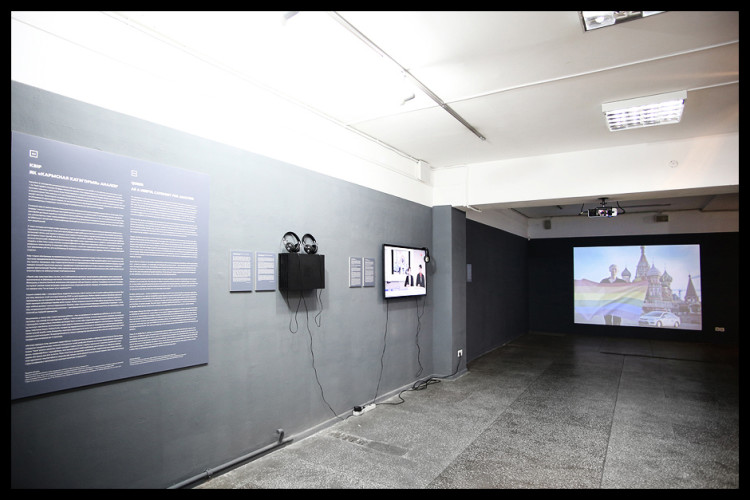
Hash tags of the project: #norm, #identity, #individual, #other, #taboo, #queer, #gender, #sexuality, #tolerance, #violence, #society, #love, #stranger, #fear, #trust, #bodily and etc.
Artists: Bergamot group (Belarus/Poland), Anatoly Belov (Ukraine), Zhanna Gladko (Belarus), Michaił Hulin (Belarus), Alaksiej Łunioŭ (Belarus), Taciana Reut (Belarus), Volha Sasnouskaya (Belarus), Tilda Swinton (GB)&Sandro Kopp (Germany/ the New Zealand), lusine talalyan / Queering Erevan collective (Armenia), Wolfgang Tillmans (Germany), Sergey Shabohin (Belarus), Alaksiej Barysionak&Inha Lindarenka&Anton Sarokin (audio-guide).
Curators: Tania Arcimovič, Alaksiej Barysionak, Inha Lindarenka, and Valancina Kisialova
Curator of the public discussion part: Hanna Laktcionava (To Be.Queer). Partners of discussion part: Makeout.by (Vika Biran)*
Exhibition is not suitable for individuals under 18 years of age, and also not recommended for persons with a conservative view on sexual relations!
Special thanks to Oliver Evans (Gallery MAUREEN PALEY, London) and British Embassy in Minsk.
ALAKSIEJ BARYSIONAK & INHA LINDARENKA & ANTON SAROKIN (BY)
XXY. Sound explication, 2014
The exhibition’s title refers to an impossible set of chromosomes (XY — #male set, XX — #female set) and zones of indiscernibility, where one relates, intersects, overlaps and flows into another. Gender-marked color poster — pink and blue — due to the same tone, offend the eyes and conflict with each other. But if you impose black and white filter on the poster, those two colors would almost merge with each other.
When the curatorial team was thinking about how to prepare the text for the exhibition, we did not want to duplicate the academic text that describes the problems of the project. Academic discourse can be dangerous for the objectification of the fragile and unstable subjectivities, referred to in the exhibition. Thus, we tried to find other forms of expression to handle the problems. So, curatorial text went beyond the explication and transformed into an art project, which is a reconstruction of the sliced statements, searched by a hashtags on twitter and other social networks on the topic of #sexuality, #identity, #religion, criticism and #politics.
Schizophrenic message flow has been processed using several software modules that form the voice signal from the printed text. Originally public statements had been transferred to the private through the possibility of contact with them in a private acoustic mode. Despite the fact that the scattered remarks are sounded, they form a hermetic and not-available-to-discuss monologue, which refers to the overproduction of information in the media and the inability to productive discussion in the printed media, television and even on the Internet.
Similar operation makes Anatoly Belov in his «The Most Pornographic Book». He uses queries from search engines about sex: what is rarely voiced in public discourse and is brought to the edge of the Internet. Depersonalized voice of the sound explication pronounces the phrases, hiding the subject of enunciation and making indiscernible the dialogue space. Explication creates a new field of hashtags: #hate_speech, #censor, #anonymity, #web_publicity. The process of working with hashtags opens up a new dimension of ourselves and the space in which we live.
Curators of the project
BERGAMOT GROUP (BY/PL)
Queer Belarus. Video performance, 7’55. 2010
#Queer Belarus is a work from the Organic Labour cycle, which consists of performances and actions based on the scripts of other people. In 2010 Bergamot group opened a call for ideas or scripts to be performed by their group, the winners of which received a gold-plated memory stick and had their ideas realised. Find out more about the open call at www.bergamot.in
The script of the video performance commissioned for the exhibition ARS HOMO EROTICA at the National Museum in Warsaw in 2010.
Pavel Leshkovich (curator of the Warsaw exhibition):
As an ARS HOMO EROTICA curator, I am starting a call for the performance script for Bergamot group thus participating in the art project of the group. I think that a curator should select the works for the exhibition, yet should not be creating works for or instead of artists. According to the wishes of Roman and Olga, however, I am offering my script. It was the artists’ idea to take part in the exhibition in such a form.
The performance I am commissioning is called Queer #Belarus. Form — video performance. Length — no shorter than one minute, no longer than five minutes. Language — Polish with English subtitles, or English with Polish subtitles. The deadline for the execution of the work — June 1st 2010. The aim of he performance — presentation of the current legal, social and cultural condition of #gays and #lesbians in Belarus. Europe is interested in the issue of human rights in Belarus, and the Poles are concerned with the fate of the Polish minorities, let’s also raise the issue of sexual minorities in this extraordinary country. Moreover, there are still discussions of the possibility of a #gay_pride in Minsk.
I would like to ask the artists of Bergamot group to familiarise themselves and research the situation of #gay/#lesbian community in Belarus, get to know the history of emancipatory struggles, interview the members of the organisations involved. On the basis of this material, an imitation of a TV news broadcast should be created, which would inform of the current condition of #gays and #lesbians in Belarus. This particular news broadcast should be the artists’ performance, where they can act in the roles of TV presenters and experts. The materials covered should reflect the specifics of the situation of #gays and #lesbians in their country, and also inform the general public of the most interesting incidents, phenomena, activists and actions. Artists can be imaginative within the conventions of a TV news broadcast, on the condition that they reflect the key and most interesting news regarding the topic concerned.
TILDA SWINTON (GB) & SANDRO KOPP (DE/NZL)
In Solidairty. From Russia with love. Photography. Animation (A.Laŭkovič), 2014
A photo by a British Actress Tilda Swinton with a sign: «In solidarity. From Russia with love.» Tilda Swinton was taken by her friend Sandro Kopp at the time of their short visit. On the July 4th, the photo appeared on Twitter and has become a viral phenomenon within 24 hours. In art context the photo is presented for the first time.
The initial curatorial idea was to exhibit the work of Tilda Swinton «Silence is Death» — a glass box. This, in our opinion, would have underlined the repressiveness of the Belarusian society and the lack of subject in contemporary Belarus, who would be able to speak of his/her invisibility, the violence over identity, and the conservativeness of public discourse. It was Tilda’s idea to show a photograph from the Red Square, which firstly appeared in media and presented a gesture of solidarity with people who are trying to speak of their identities in the context of the repressive policies. Being a media statement, this work exhibited in a gallery, raises the questions of discursiveness of the creative and activist practice of Tilda, which overlap and intersect.
Curators of the project
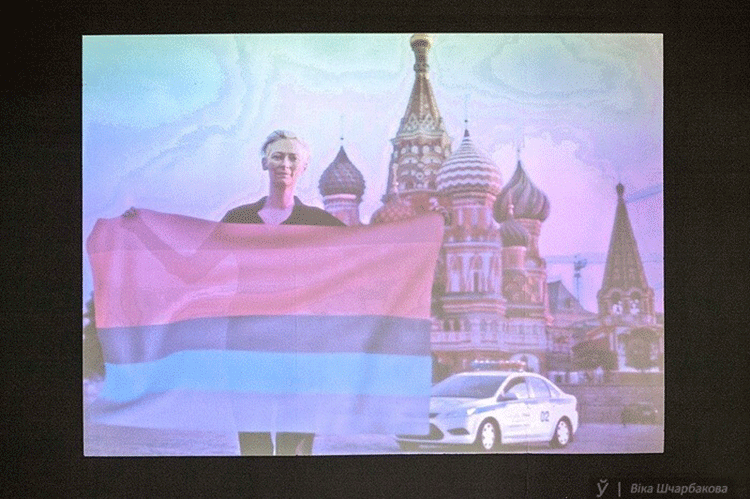
SERGEY SHABOHIN (BY)
Installation Zone of Repression. From a project Practice of Subordination, 2014 (installation created on the basis of collection of writings in men toilets in Belarus, 2006-2014). Tiles, grout, paint, markers, light bulb
As part of the project Practice of Subordination, the installation traces the dissemination of effects of #power, direct and indirect, in the public and private spheres. In the gallery setting Sergey Shabohin constructs a space of a public men’s toilet. The artist replicates phrases, slogans and correspondence, which he has been collecting since 2006 in men’s toilets around Belarus.
Public toilets are a strange mixture between the #public (encounters with unknown people, could be accessed by all social groups) and the #private space (there is no surveillance). This is also a space of #communication, which carries the statements made by men directed at other men: from sexual propositions to #homophobic_statements, from black humour — to honest confessions, from political slogans — to subcultural codes. The notes on the seams between the tiles are protected from disappearance, while those on the tile surface are taken off by the cleaners. Working with the theme of biopolitic control over bodies (related to #sex, #hygiene, health), Sergei Shabohin underlines the similarities between the tiles’ surface, which is the plane of #normativity and power, and the seams in-between tiles- which are the spaces of communication and speech, as well as deviational forms of behaviour (both political and sexual) which are being pushed to the margins of social life.
Curators of the project
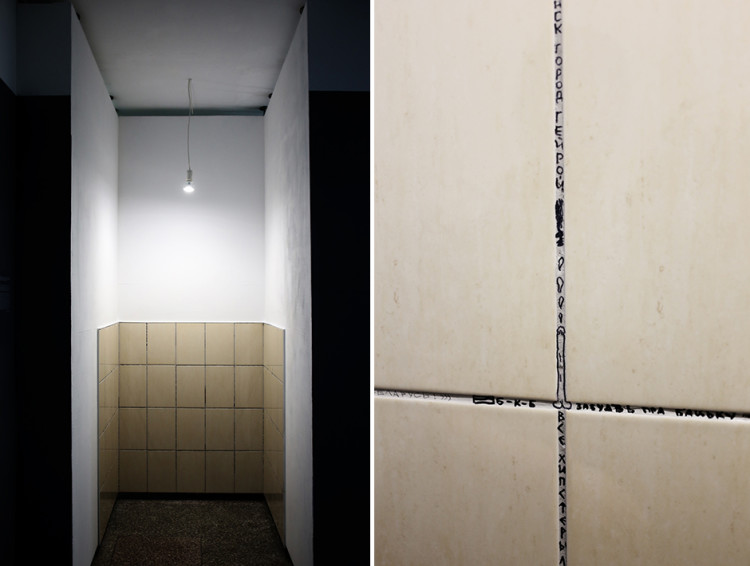
ZANNA GLADKO (BY)
Inciting Force. Series of photographs, b/w print on metal. 2011-2014
The art research project of Zanna Gladko Inciting Force tries to think #female subjectivity in a patriarchal culture system, where the position of a father and a man is the originary point of power distribution — in the economic, political and cultural fields. The idea of a Female as Other is relevant in Belarus, as it is in other patriarchal societies, where freedom of women’s self-identification is confronted with #aggression, cliché, and #intimidation.
Feminist critique states that the sexualised representation of women in mass-media is a form of exploitation and an attribution of woman as an object of desire. Gladko exploits these images of exploitation to her own ends, destroying the overused images and overthrowing the cultural codes, showing their contradictions and conflicts. The artist works with the surface of representation: surface of the body and the image. Gladko forms layers, appropriates, turns around, and fixes the imagery on her #body. (This imagery is based on the patriarchal perception of a female figure, female beauty and sexuality). She attempts to inhabit and appropriate the position of #male power — successful, prominent, and aggressive and use it in the struggle for her own independence (independence of her position, statements, and creativity). Zanna Gladko does not reject the glossy representation of women, full of longing, desire and wild sexuality — she flips the weapons of representation towards the patriarchy.
The first part of Inciting Force project was exhibited in 2012 in Y gallery, and was dedicated to the analysis of the artist’s relationship with her father. The part of the project created for the XXY exhibition is a series of self-portraits, in which the artist incites force of the powerful male gaze, searching for a place of the feminine in an aggressive masculine culture. This is how the artist is both subjected to men’s power, and at the same time rules them.
The artist is working with subjects of religion and maternity, symbolic ambivalence and critique of mass culture, ornament and armament, demonism and hysteria, #violence and conflicts, #power of the father and the guilt of original #sin. A separate attention is given to themes of power mechanisms reproduced in the art world, both in the global narrative (an image from the film Un Chien Andalou), and in local history (portraits of Belarusian artists on her body), and also personal/alien identity research (an example of a transvestite’s view of the female and an implantation of her image on a colleague, the artist Sergey Shabohin).
Curators of the project
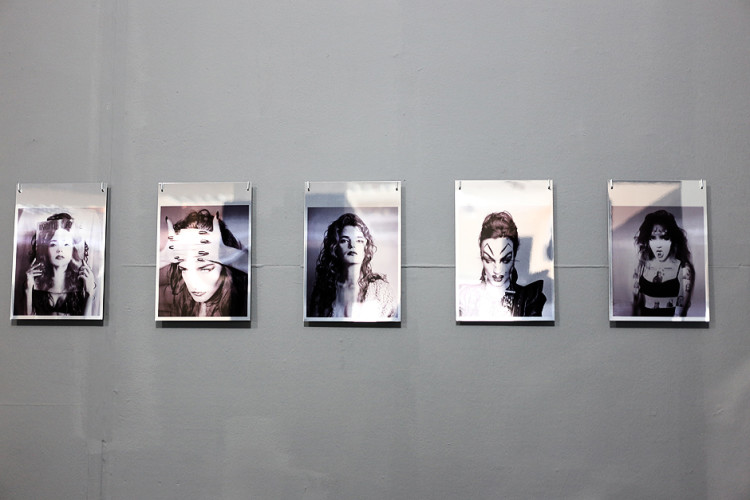
ANATOLY BELOV (UA)
The most pornographic book II. Graphics 2012
Sex Medicated Rock-n-roll. Video 2013
In his art practice, which includes graphics, cinema, and music Anatoly Belov explores the boundaries between the personal intimate feelings and the social and political statements. In 2012, Belov participated in «Ukrainian body» — an exhibition of young Ukrainian artists, which addressed the surfaces of intersection of bodily practices and a repressive #society. The scandalous closing of the exhibition within the three days showed that by working with the tabooed topics, the artist today is able to #identify the weak points. Throughout his artistic practice, Belov consistently worked with the issues of #homophobia, and the conservative use of moral and traditional values, all of which exclude the bodies and the voices of the subjects outside of the normative order of the sexual, family and friend relationships.
«The Most Pornographic Book» presents the space where the intimate experiences of the artist (friendly relations, phantasms, sexual experiences or fantasies) intersect with the political dimension of the subjectivation of the private sphere. The artist intertwines homoerotic images and conservative political slogans, fragments of personal relationships and domestic scenes, profiles of friends in social networks and search queries.
The musical directed by Belov also represents a space of the layering of the statements. The poetic texts, which appear in «The Most Pornographic Book» become the songs of the band «Lyudska Podoba» (in which Belov is one of the participants), and the video «#Sex Medicated Rock-n-Roll» is the performance for one of the band’s songs. Using the aesthetics of music video, Belov undermines the patriarchal code through showing the relation between the three people. This is how he creates the space of understanding, #empathy and #love, in which the #stereotypes and conventions could be overcome.
Curators of the project
WOLFGANG TILLMANS (DE)
From Central nervous system project. 2012-2013
For the last few years Wolfgang Tillmans has been working on his Neue Welt project, studying diverse global territories and ways of capturing and printing imagery with new digital technology. In his most recent project Central nervous system, Tillmans openly presents an ongoing friendship and an unrequited love that is compelling, adventurous and vulnerable in equal measure. This is a renewed exploration into portraiture for Tillmans and while the works depart from the subject matter of Neue Welt they are also an extension of that intimate vision of the world. This collection of images is as much an intimate portrait of a nuanced relationship as it is a portrait of the artist himself. The works from central nervous system were shown together for the first time in his solo exhibition at Maureen Paley, London in 2013.
«Making a portrait is a fundamental artistic act and the process of it is a very direct human exchange. The dynamics of vulnerability, exposure, embarrassment and honesty do not change, ever. I’ve found that portraiture is a good leveling instrument for me and it always sends me back to square one».
Wolfgang Tillmans, 2001
Having pioneered a conceptual approach to the production and installation of photographic material for over two decades his new experiments with the developments in inkjet printing have allowed a heightened sharpness into his images that look hyper-real, yet painterly at the same time. Tillmans illuminates the quotidian and shows us the world as it is, highlighting its often overlooked strangeness and beauty.
Maureen Paley Gallery
Wolfgang Tillmans’ participation in the XXY project is not only an opportunity to see the work of an internationally established artist, but also a quality example of the articulation of themes of #gender and sexual #identity in the global contemporary arts. For us, the curators of the project, of the most importance is the gesture of the artist (as is the case with Tilda Swinton), and his #solidarity with us in asking questions about the acceptance of #otherness in Belarusian society. The edginess and the provocative nature of Tillmans’ work that lies on the surface is only the cover. We think that the work is firstly and most importantly about #tenderness, fragility, #transitivity, #sensitivity, and #trust that come into being and get established between the individuals. It is the #beauty that the artist saw in the everyday life and put into each individual photo canvas.
It’s important to note that the contemporary post-digital photography has been formed under the significant influences of Tillmans and an American photographer Nan Goldin, who shaped the type of canon in photography according to which (knowingly or unknowingly) young artists work, including those from Belarus.
Curators of the project
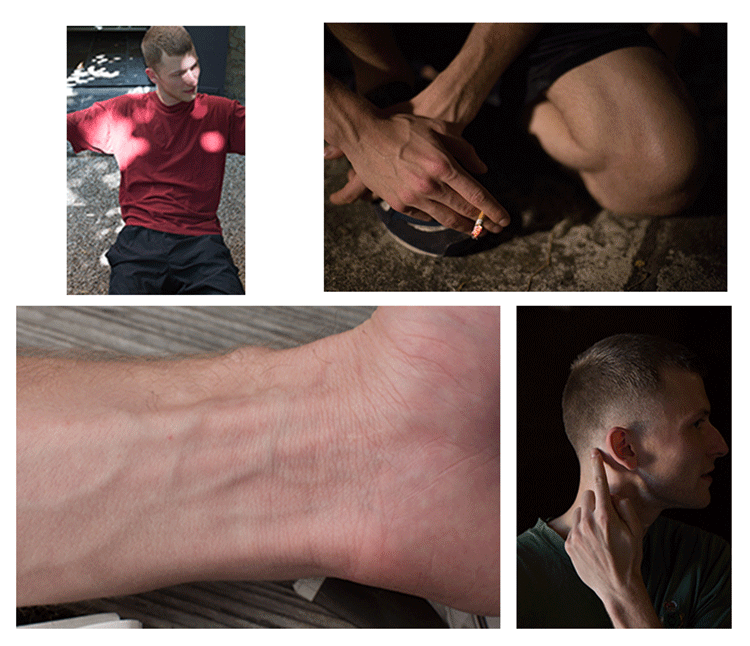
© WOLFGANG TILLMANS. Courtesy Maureen Paley, London
LUSINE TALAYAN / QUEERING YEREVAN ART GROUP (AU)
Is a boy or a girl? Video art, 3’05. 2011
A collective«QUEERING YEREVAN» became well known in 2007, when a group of artists, writers, and activists decided to collaborate in various forms. Their aim was to use the capital of Armenia — Yerevan — as an experimental space for new cultural creativity in order to detonate, de-automate, and undo the social #stereotypes.
Apart from working in public spaces (drawing graffiti, putting up projects in the city squares), the group is actively working with the #body as means to assert its right for visibility. In this sense, the video work by Lucine Talalyan Is A Boy Or A Girl are extending the boundaries of perception of corporeality. Our #body, its identification and articulation — it is not only the carrier of our sexual or #gender identities – but the space of the individual within which one has the right to visibility. The art group is not merely posing questions; they are fully convinced in the necessity to act. When choosing the term #queer for the name of their group, they did not mean it as a state, but as an act. To queer means to act. This strategy is very visible in their works, where #provocativeness, #violence, aggressiveness are not the themes but the means to break through the certain arrangements of a conserved society.
Curators of the project
MICHAIL HULIN
I am not a gay. Action, video, 13’48. Minsk 2008
Action «I am not a gay» is a part of the project «I am not… » by Michail Hulin, that also includes action-performances «Ich bin keine Partisan», «I am not an American», «I am not a terrorist», «I am not a Jew». In his «I am not a gay» performance, the artist deliberately chooses a figure of a transsexual, not a homosexual. In his opinion, there is no difference between the two terms in the minds of Belarusian society.
The action «I am not a gay» refers to the invisible social, ethnic, subcultural and other groups of Belarusian society. In this respect, together with «I am not a gay», it would be possible to show posters «I am not a woman», «I am not a disabled person», «I am not a Jew», «I am not a pensioner». Belarusian authorities are benefiting from positioning the #society as a homogenous #community, as a unity without differences: precisely this allows them to speak on behalf of the whole nation. Invisible groups, as a result of this, get marginalised, and further, deprived of equal rights to exist with the majority. By making the above mentioned marginalised groups visible, Michail Hulin proposes his critical look at society. His view of society allows questions about social and cultural diversity, collective #identity and #memory, and about pressing social problems. This appears to be very important, as none of these questions have definite answers; the first consequence of this lack of definite answers is the arrival of hostility and #fear, as seen by the reaction of the audience.
Volha Šparaha
Actionism of Mihali Hulin and «1+1=1» Group: from social phobias to the conditions of their reproduction// «1+1=1» — Collection of pARTisan
The important aspect of the performance practice of Michail Hulin (the series of actions «I am not …», performance «Personal Monument») is the diagnostics of the cityscape and the discursive arena of contemporary Belarusian values as non-conflictual and #homogenous. By deploying the aesthetics of carnival and the spectacular, Hulin performs a double negation, as he negates the belonging to groups that are in themselves invisible in the public discourse. He explicitly uses the figure of #freak — a non-dangerous #Other — in his performance, which are also actively represented in mass culture and on stage. This also underlines the non-conflictual nature of the performance itself — public appearance of Other in conservative societies can only be symbolic (for example a clown in a carnival setting), but would be repressed if the experience of Otherness enters everyday existence.
Curators of the project
TACIANA REUT (BY)
All those like you are growing into addicts*. Photography, video 2013-2014
*From Dasha interview
This project started more as a search for national and territorial belonging within the emigrant community, not as a study of sexual #identity of a person. At that time I lived in Poland and started doing a project on Belarusians in Warsaw, which included Dasha and Denis, who became my main characters. Afterwards the aspect of emigration was also important in the project (I continued to photograph Dasha on the train on the way to Minsk), but at some point the topic of couple’s relations came to the forefront: gender roles and their interaction with the «outside world».
Her difference from the norm causes people the feeling of #astonishment, #confusion, rejection, #fear and sometimes an open conflict. While accompanying guys to work, in transport, clubs, doctors, in the pool, I involuntarily began to monitor what is going on around them: special attention, glances (especially children who demonstrated their lack of understanding sincerely and openly: «Who is in front of me? A boy or a girl?»), questions. It was obvious that all this did not cause any discomfort to the guys. Only later I found out the personal stories about the situations, when a sense of humor and openness were not enough to confront an open aggression. And maybe, this external relaxedness, openness, friendliness were brought up by a long period of #confrontation and hardening under veiled or overt #hostility.
Taciana Reut
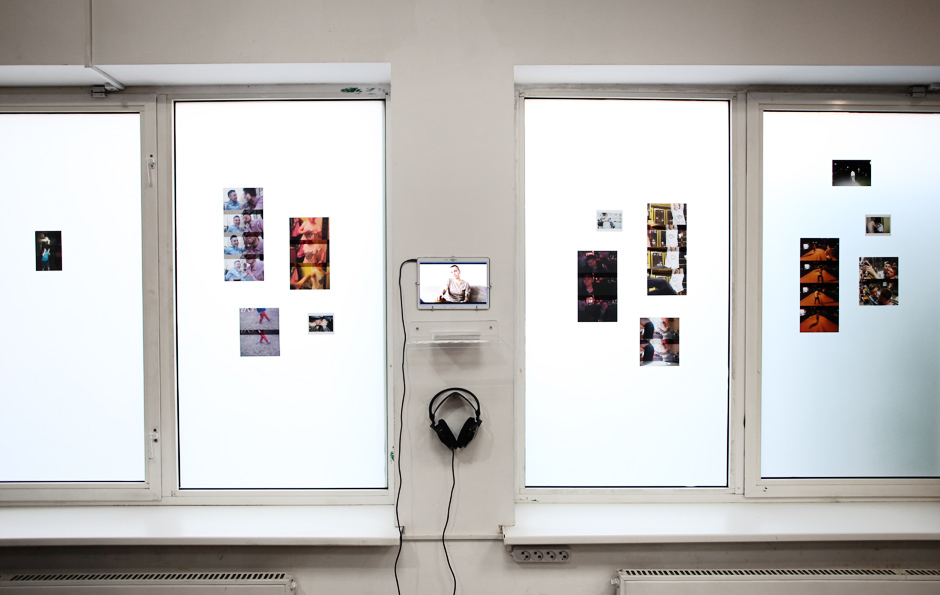
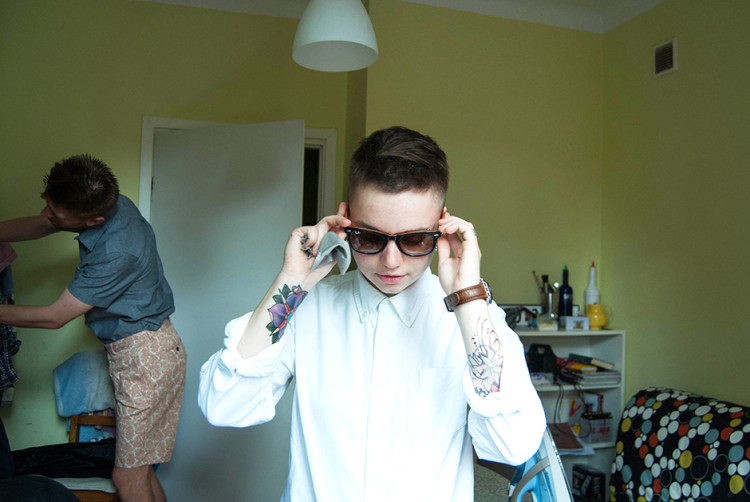
Taciana Reut’s photographic method of shooting, on the one hand, indicates the distance of an external observer in relation to its object, on the other hand, the viewer approaches to it very close. Reut documents scenes from the everyday life of her friends. The protagonist of the «observation» — Dasha — principally rejects the dominant gender roles, not marking her #identity through gender attribution, appearance and manner of behavior. Dasha avoids certain naming of her identity that society requires from her — resistance to the pressure of traditional culture that connects subjectivity with stable social roles. On the border between distanced view and belonging there is a place for #queer subjectivity gentle representation: dynamic, changing and elusive.
It is important to note that Dasha was already a party to the sociological art photo project by Alina Krušynskaja «Like a boy,» where her conflict with her uneasily definable gender identity was presented through written statements which were exhibited together with photos. Taciana Reut’s project is more documentary in nature, which is neutralized by family albums aesthetics and method of exposure. «Observing» Dasha day after day Reut emphasizes an atmosphere of #love, #affection, belonging, #trust, as well as captures the conflict zones, #fears and #concerns.
Curators of the project
VOLHA SASNOŬSKAJA (BY)
Celebration. Photography, 2012 — in progress
Project Celebration works with the concept of the male gaze and the canons of normative #corporality in the context of a patriarchal culture and modern media as a part of it, problematizing the process and conditions of subjectification and self-representation, including these elements in the space of modern Belarusian culture.
Feminist critics state that #woman is a passive object of a gaze. In patriarchal discourse women have to enjoy the fact that they are looked at and admired. On the one hand, exaggerated view is presented in the project Celebration — a radically close peering where the female image decays to indistinct spots and texture. The more you gaze trying to usurp the image, the more it resists to recognition and definition. On the other hand, the project shows the reproduction of women’s traditional patterns of #gender representation, particularly in the media, through their poses, which they take in front of imaginary «male gaze».
The project highlights the dialectic of #body production from the inside, pushed away from the subject itself, and outside, imposed by subjectivized techniques of power. Sasnoŭskaja uses the appropriation of images. On the one hand, these are images from social networks: fragments of young bodies from Minsk discos. These snatched out from the crowd beautiful bodies posing as if being anonymous, they are deprived of personal and social history, they report only youth, #beauty and catharsis (sublime). On the other hand, Sasnoŭskaja uses pictures of monuments located in the urban space. Introducing durability and monumentality, bronze bodies of modern urban sculptures are extremely expressive (drawing of the waist, chest, etc.) and almost pornographic, in response to the request of authorities and embodying physicality within a specific canon.
Immobility, rigidity, untimeliness and intendance for viewing, as well as the displacement of the social characteristics of these posing bodies, weaves them into the context of the official Belarusian culture, with its emphasis on decorativeness and settling indifference to politics of this decorativeness.
Curators of the project
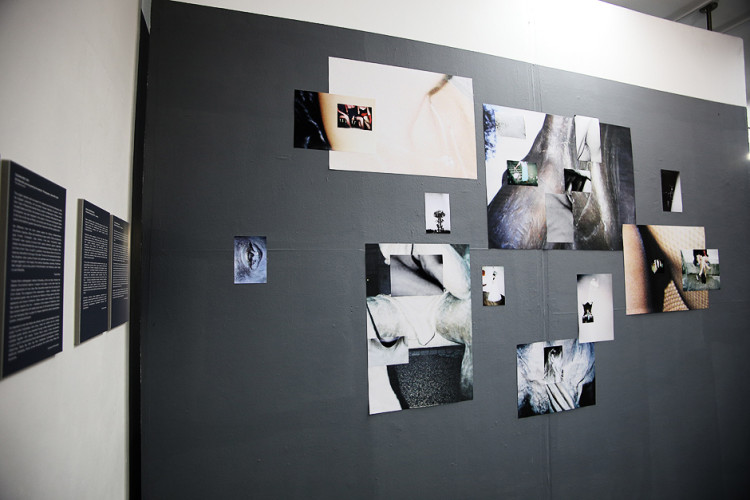
ALAKSIEJ ŁUNIOŬ (BY)
The other heaven/ Don’t tell mama. Installation. 2014
The main object of the installation is playing cards, which belong to the range of objects from my project «Duty Free». The prototypes of these objects have always been banal items that I have endowed with introversion (boxes with double bottom and a ball, concealed in them, i.e. sound; blurred mirror that does not reflect; book cache; bandage). Playing cards have a reverse side. Like a child who breaks a thing, I find the outer manifestation of it equivocal — I wonder, what is inside. By getting rid of the #taboo, I understand the obvious: «The owls are not what they seem»* and «Daily routine continuously being solidified in the form of objects»** is not banal.
* D. Lynch
** M. Blanchot
Alaksiej Łunioŭ
Fragility and intimacy are emblematic of works by Alaksiej Łunioŭ. Every time by choosing a certain sphere, he refers to his own feelings in the first place. It is often areas which a tabooed by society or a conscious individual. Child like sincerity with which artist tells about himself and recognizable images (pornographic playing cards hidden from parents’ view) become a connection between him and a viewer. On the one hand it is personal — introversion, sensitivity, #sensuality, #anxiety. On the other hand it is a common space where you can find your own points of memory, #pain and #fear.
Curators of the project
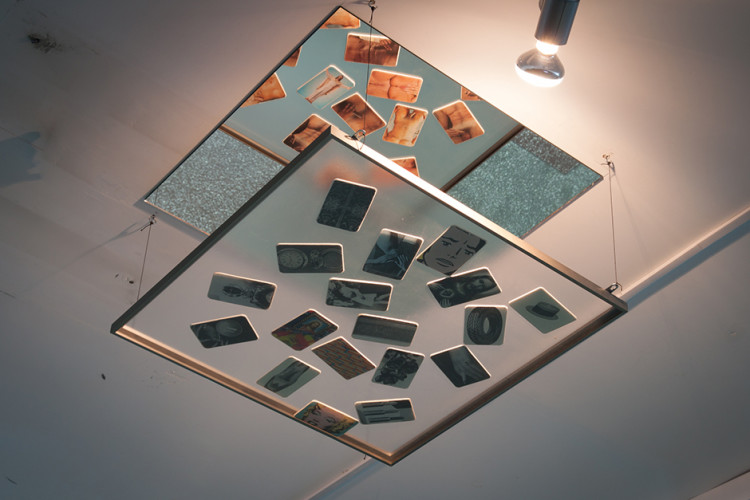
Photo © 34mag.net
Opinions of authors do not always reflect the views of pARTisan. If you note any errors, please contact us right away.



